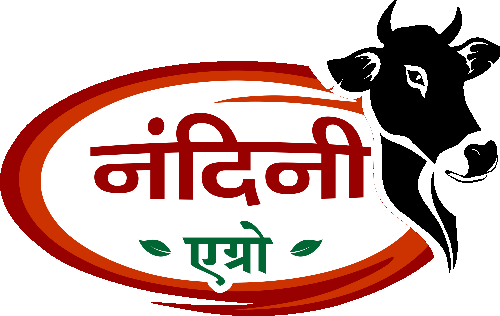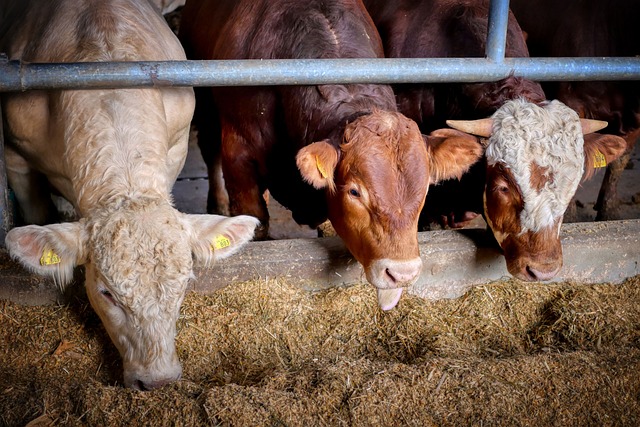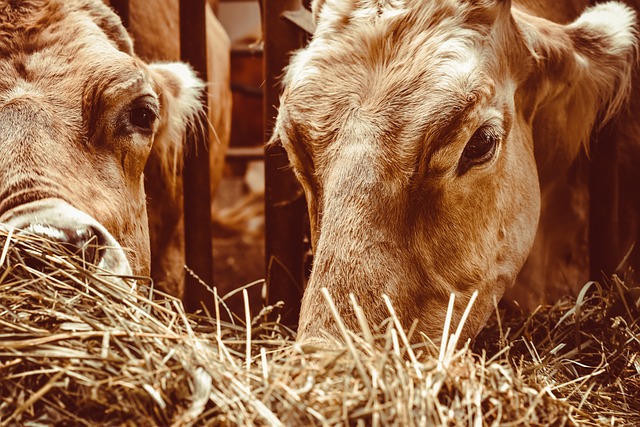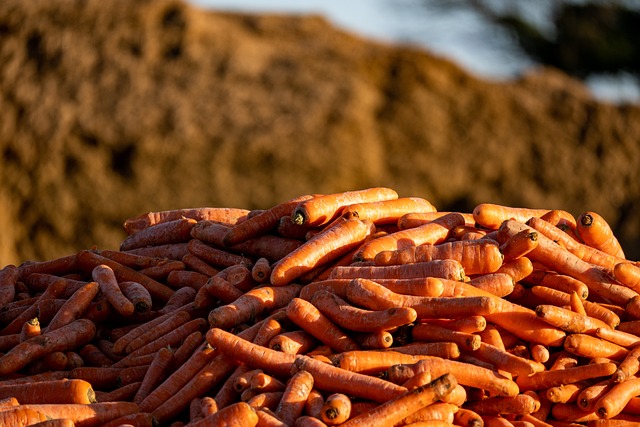Mastering the Art of Cattle Feeding: A Comprehensive Guide
Feeding cattle is a crucial aspect of livestock management that directly impacts their health, growth, and overall productivity. As a responsible farmer or rancher, understanding the fundamentals of proper cattle feeding is essential. In this comprehensive guide, we will walk you through the key considerations and best practices for feeding your cattle to ensure their optimal well-being and maximize your farm’s success.
Know Your Cattle’s Nutritional Requirements:
To provide the best care for your cattle, it’s important to understand their specific nutritional needs. Factors such as age, weight, breed, and purpose (milk production, meat production, or both) influence the dietary requirements of your animals. Consult with a veterinarian or livestock nutritionist to determine the ideal nutrient composition, energy levels, and protein content necessary for your cattle’s optimal growth and performance.
Quality Forage as a Foundation:
Forage forms the foundation of a healthy cattle diet. Ensure a reliable supply of high-quality hay or pasture to meet your cattle’s basic nutritional needs. Select forages based on their nutrient content, availability, and suitability for your climate and soil conditions. Rotate pastures regularly to prevent overgrazing and promote healthy regrowth. Test your forages periodically for nutrient composition to make any necessary adjustments to the feeding program.
Supplementing with Concentrate Feeds:
In addition to forage, supplementing your cattle’s diet with concentrate feeds is often necessary to meet their nutritional requirements, especially for animals in intensive production systems. Concentrate feeds such as grains, protein-rich supplements, and minerals help provide the necessary energy, protein, vitamins, and minerals. Consult with a nutritionist to determine the appropriate concentrate feed ration for your specific herd and feeding goals.
Feed Management and Ration Formulation:
Maintaining a consistent and balanced feeding program is vital for cattle health and productivity. Develop a feeding schedule and stick to it. Divide the daily feed into multiple meals to prevent overeating and digestive disorders. Monitor the body condition score of your cattle regularly to ensure they are neither underfed nor overfed. Adjust the feed ration as needed to meet their changing nutritional requirements throughout different stages of life.
Water, the Essential Nutrient:
Water is often overlooked but plays a critical role in cattle nutrition. Ensure a clean and accessible water source for your cattle at all times. Cattle may consume 10-20 gallons of water per day, depending on various factors like temperature, lactation, and weight. Regularly clean water troughs and ensure they are free from contaminants to promote good herd health.
Consider Seasonal Variations:
Cattle feeding practices may vary with the changing seasons. During the winter, adjust the feed ration to provide additional energy to keep your animals warm. In hot summer months, provide shade and ensure a sufficient supply of water to prevent heat stress. Adapt your feeding program to match the seasonal forage availability and quality.
Conclusion:
Feeding cattle is both an art and a science. By understanding your cattle’s nutritional requirements, providing high-quality forage, supplementing with appropriate concentrate feeds, and practicing proper feed management, you can ensure the health, well-being, and productivity of your herd. Remember, consult with experts, stay informed about the latest research, and regularly evaluate and fine-tune your feeding program to achieve the best results for your cattle and your farm. Happy and well-fed cattle are the foundation of a successful livestock operation.
Choosing the Right Cattle Feed: A Guide to Nourishing Your Herd
Selecting the right cattle feed is a critical decision that can significantly impact the health, growth, and productivity of your herd. With a wide range of options available in the market, it’s essential to understand the factors to consider when choosing cattle feed. In this guide, we will provide valuable insights and considerations to help you make informed decisions about nourishing your cattle effectively.
Assess Your Cattle’s Nutritional Requirements:
Before diving into cattle feed options, it’s crucial to assess your herd’s nutritional requirements. Consider factors such as age, weight, breed, purpose (milk production, meat production, or both), and any specific dietary needs. Understanding these requirements will guide you in selecting feed that meets the appropriate energy, protein, vitamin, and mineral levels to support their optimal growth and performance.
Evaluate Feed Ingredient Quality:
The quality of feed ingredients is paramount for your cattle’s well-being. Look for reputable brands that prioritize sourcing high-quality ingredients. Assess the nutrient composition and digestibility of the feed to ensure it aligns with your cattle’s requirements. Avoid feeds that contain excessive fillers, by-products, or low-quality ingredients, as these can compromise the nutritional value and overall health of your animals.
Consider Feed Formulations:
Cattle feeds come in various formulations, including complete feeds, supplements, and additives. Complete feeds provide a balanced mix of nutrients and can be used as the sole source of nutrition. Supplements are designed to complement forages and may target specific nutrient deficiencies. Additives, such as probiotics or rumen enhancers, can support digestion and overall gut health. Determine which formulation best suits your feeding program and consult with a nutritionist if needed.
Assess Feeding Methods and Farm Infrastructure:
Consider your farm’s infrastructure and feeding methods when selecting cattle feed. Some feeds are more suitable for grazing systems, while others work well with confinement systems. Determine if the feed can be easily integrated into your existing feeding practices, whether it’s through feeding equipment or manual distribution. Additionally, assess the feed’s storage requirements, shelf life, and any special handling considerations to ensure practicality on your farm.
Evaluate Cost-effectiveness:
While quality is paramount, it’s also important to consider the cost-effectiveness of cattle feed options. Compare prices and nutrient composition among different brands and products. Calculate the cost per unit of nutrient or per animal to determine the most economical choice without compromising nutritional value. Consider long-term benefits such as improved growth, reproductive efficiency, and reduced veterinary costs when assessing the overall value of the feed.
Seek Recommendations and Expert Advice:
Take advantage of the expertise available in the industry by consulting with experienced farmers, nutritionists, or veterinarians. They can provide valuable insights based on their experience and knowledge. Attend industry conferences, workshops, or webinars to stay updated on the latest research and advancements in cattle nutrition. Networking with fellow farmers can also provide valuable recommendations and insights into successful feeding practices.
Conclusion:
Choosing the right cattle feed is a crucial step in ensuring the health, growth, and productivity of your herd. By assessing your cattle’s nutritional requirements, evaluating feed ingredient quality, considering feed formulations, assessing feeding methods and farm infrastructure, and evaluating cost-effectiveness, you can make informed decisions that align with your farm’s goals and the well-being of your animals. Remember, proper nutrition is the foundation of a thriving herd, and selecting the right cattle feed is a key component of your overall livestock management strategy.
Enhancing Cattle Nutrition: Exploring Innovative Feed Solutions
Providing optimal nutrition is essential for the well-being and performance of your cattle. As the field of livestock nutrition advances, new and innovative feed solutions are emerging to meet the evolving needs of modern farming. In this blog, we will explore some of these innovative feed options that can help enhance cattle nutrition, promoting better health, growth, and productivity.
Protein-Rich By-Products:
Utilizing protein-rich by-products from various industries can be an innovative and sustainable approach to enhance cattle nutrition. By-products such as soybean meal, cottonseed meal, and distillers grains offer a cost-effective source of high-quality protein. These by-products can be incorporated into feed formulations to supplement protein requirements, providing a balanced and efficient source of nutrition for your cattle.
Precision Feeding Technology:
Precision feeding technology is revolutionizing the way we feed cattle. Automated feeding systems equipped with sensors and monitoring devices can precisely deliver feed based on the specific needs of individual animals or groups. This technology allows for targeted feeding strategies, minimizing waste, and optimizing nutrient utilization. Precision feeding promotes better feed efficiency, reduces costs, and ensures that each animal receives the right amount of nutrition.
Nutrigenomics:
Nutrigenomics is a cutting-edge field that explores the interaction between nutrition and gene expression. By understanding how specific nutrients influence gene activity, researchers can develop feed formulations tailored to optimize cattle health and performance. Nutrigenomics can help identify feed ingredients that enhance immune function, improve nutrient absorption, and support overall metabolic health, leading to improved performance and disease resistance in cattle.
Functional Feed Additives:
Functional feed additives are gaining popularity as innovative solutions to improve cattle nutrition. These additives are designed to address specific challenges or enhance certain physiological functions. For example, prebiotics and probiotics can promote a healthy gut microbiome, improving digestion and nutrient absorption. Enzymes can enhance the breakdown of complex feed components, increasing nutrient availability. Functional additives such as antioxidants and immune stimulants can bolster the immune system, reducing the risk of diseases.
Precision Mineral Supplementation:
Minerals play a crucial role in cattle nutrition, and precision mineral supplementation can optimize their utilization. Advances in mineral research have led to the development of chelated minerals, which are more easily absorbed and utilized by cattle. Additionally, mineral boluses or controlled-release mineral blocks can provide a continuous and controlled supply of essential minerals, ensuring consistent intake and reducing the risk of deficiencies or imbalances.
Alternative Forage Sources:
Exploring alternative forage sources can be an innovative approach to enrich cattle diets. Forage options such as silage, haylage, or hydroponic fodder systems can provide nutrient-dense alternatives to traditional pasture. These options can help overcome seasonal forage limitations, improve feed quality and consistency, and increase overall feed efficiency. Additionally, incorporating diverse forage sources can enhance nutrient intake and contribute to a well-rounded diet for your cattle.
Conclusion:
As the field of livestock nutrition progresses, innovative feed solutions continue to emerge, offering opportunities to enhance cattle nutrition and improve farm productivity. Incorporating protein-rich by-products, utilizing precision feeding technology, exploring nutrigenomics, incorporating functional feed additives, optimizing mineral supplementation, and considering alternative forage sources are just a few examples of these innovative approaches. By staying informed and embracing these advancements, you can provide your cattle with the best possible nutrition, ensuring their health, well-being, and success on your farm.








